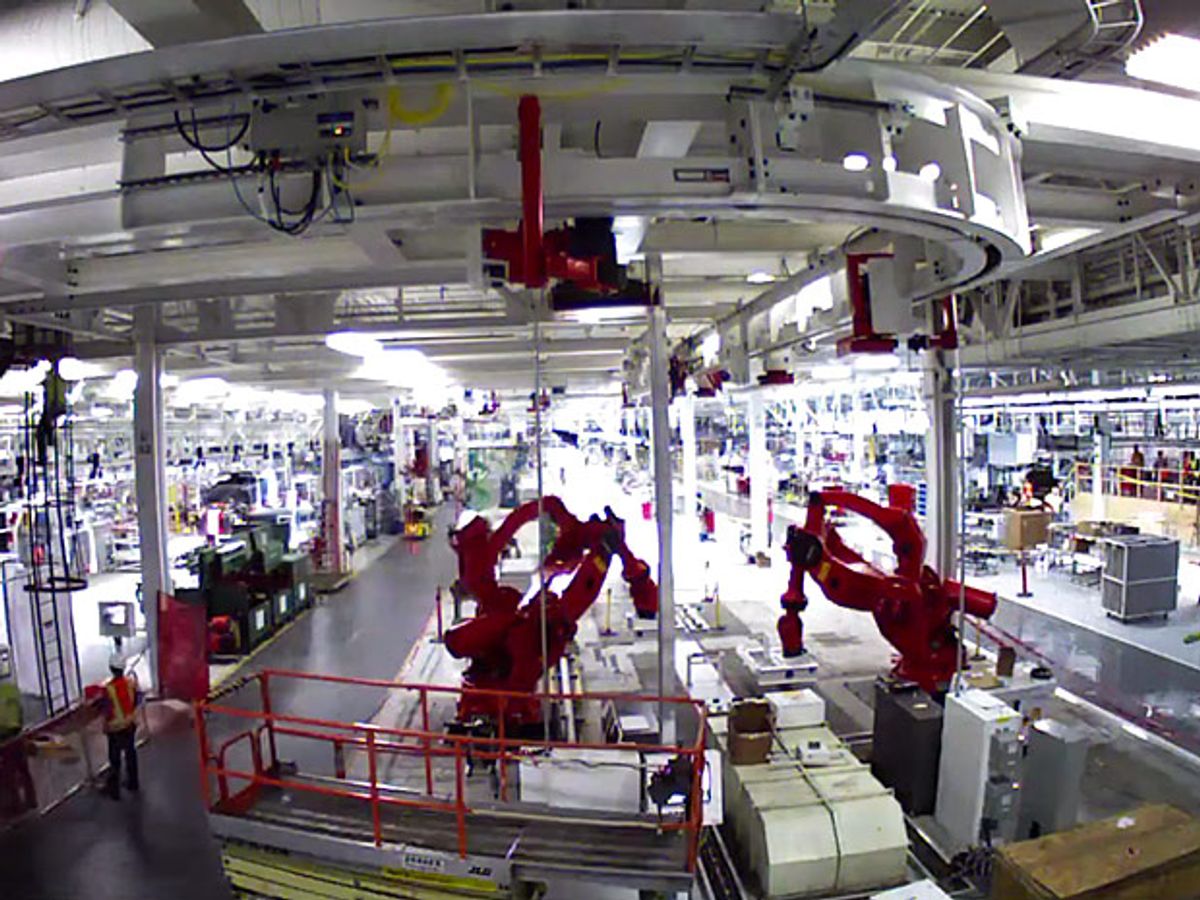We recently caught a glimpse of both Tesla’s and Lyft’s freshly remodeled digs, courtesy of a Tesla blog post, a San Francisco Chronicle article, and a Curbed report post. Though Tesla’s just-updated space is a factory floor, and Lyft’s is a three-story building in San Francisco’s Mission District, what they have in common is Silicon Valley whimsy.
Over at Tesla’s factory, overhead steel structures previously used to move cars and parts during the assembly process have been replaced by robots named after X-Men characters. In Tesla’s blog, the “Tesla Motors Team” explained that, “To us, these robots are like superheroes, so we figured they deserved superhero names.” (Tesla CEO Elon Musk is no stranger to the world of superheroes; he reportedly was the model for the Tony Stark character as portrayed in the Ironman movies, and makes a cameo in Ironman 2.)

So Tesla’s new robots are tagged Xavier, Iceman, Wolverine, Beast, Storm, Colossus, Vulcan, and Havok. Of that group, Storm is the only woman. That makes Tesla’s robot workforce 12.5 percent female—low even for a Silicon Valley tech company. Tesla could at least have gotten up to the engineering workforce average of 25 percent (still not impressive) by selecting a second woman from the X-Men oeuvre (perhaps instead of Vulcan, who, my expert sources tell me, has only a tenuous claim to being an X-Man, and is certainly far less qualified to represent the team of superhumans than, say, female superheroes Rogue or Shadowcat).
Meanwhile, over at Lyft, they’ve named the printers after people with great mustaches, like Tom Selleck. I guess I can’t complain about the lack of diversity in this selection.
Both companies have gone for the wide-open floor plan; Tesla, because that’s pretty much what you need at a factory; Lyft, because that’s pretty much what is cool right now. At Lyft, however, the mostly open office space hides a secret room; the door opens when you press on a certain portrait to reveal a cozy reading area with a small stash of alcohol; it has plenty of bookshelves, but only a few actual books (because millennials don’t actually read books, I suppose, but use them as platforms to stack monitors on.) If Tesla has a secret room, the company isn’t saying.
Photo walls are big at tech companies these days. Tesla’s new photo wall shows the factory building over its 54-year life, including its years as home to General Motors and then NUMMI, GM’s joint venture with Toyota. Lyft’s photo wall displays pictures of popular storybook characters, including Peter Pan, Mary Poppins, and Willy Wonka. Besides collecting photos, Tesla commissioned some art. The company had a comic artist do illustrations of the manufacturing process, and these are printed on some of the interior glass walls. Lyft’s headquarters boasts some original artwork as well: mustache-inspired paintings from Lyft’s various city launches.

At Tesla, the decorating team wrapped pillars with climbing plants (because every cool company needs a living wall). At Lyft, they wrapped 8000 pool noodles with pink fabric and covered the interior of the elevator with pink fur. Tesla’s building plan includes skylights; Lyft reached for the skies with a roof deck.
Both companies’ renovations displayed social consciousness. A barrel placed at Lyft is dedicated to collecting “hoodies for the homeless.” Tesla boasts that it recycled 50 tons of material during the remodel.
Photo walls are big at tech companies these days. Tesla’s new photo wall shows the factory building over its 54-year life, including its years as home to General Motors and then NUMMI, GM’s joint venture with Toyota. Lyft’s photo wall displays pictures of favorite storybook characters, including Peter Pan, Mary Poppins, and Willy Wonka. Besides collecting photos, Tesla commissioned some art—the company had a comic artist do illustrations of the manufacturing process, and these are printed on some of the interior glass walls. Lyft’s headquarters boasts some original artwork as well—mustache-inspired paintings from Lyft’s various city launches.
Both companies have gone for the wide-open floor plan; Tesla, because that’s pretty much what you need at a factory; Lyft, because that’s pretty much what is cool right now. At Lyft, however, the mostly open office space hides a secret room; the door opens when you press on a certain portrait to reveal a cozy reading area with a small stash of alcohol; it has plenty of bookshelves, but only a few actual books (because millennials don’t actually read books, I suppose, only use them to stack monitors on.) If Tesla has a secret room, the company isn’t saying.
Updated 11/21
Tekla S. Perry is a senior editor at IEEE Spectrum. Based in Palo Alto, Calif., she's been covering the people, companies, and technology that make Silicon Valley a special place for more than 40 years. An IEEE member, she holds a bachelor's degree in journalism from Michigan State University.



